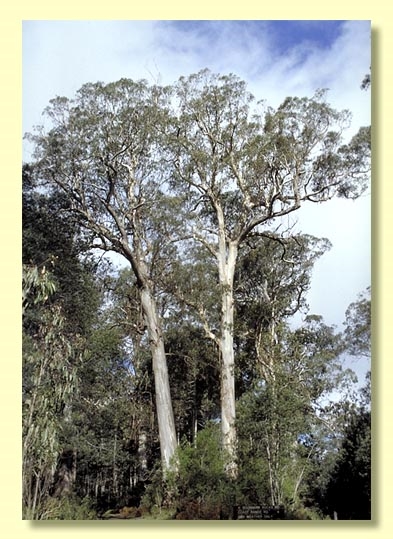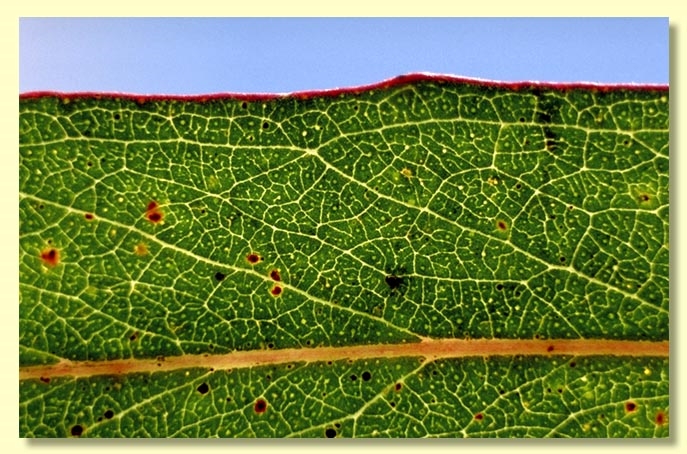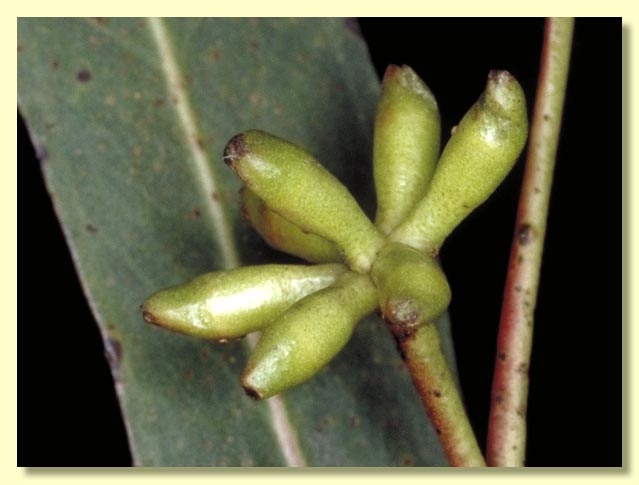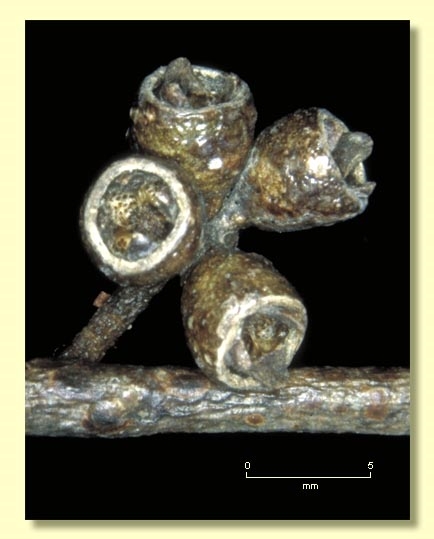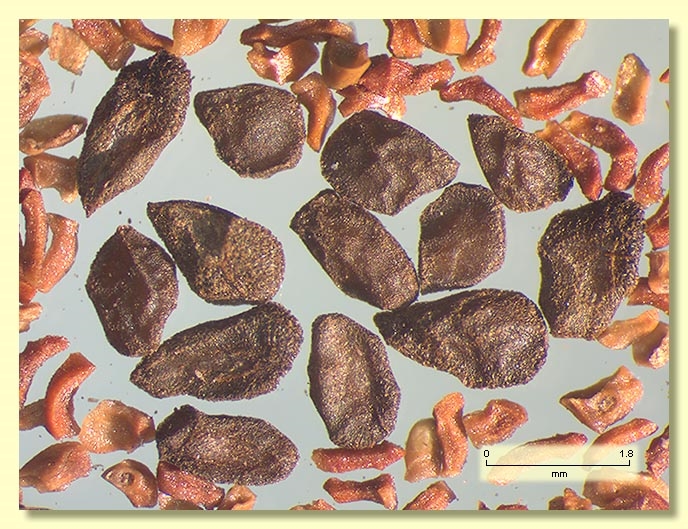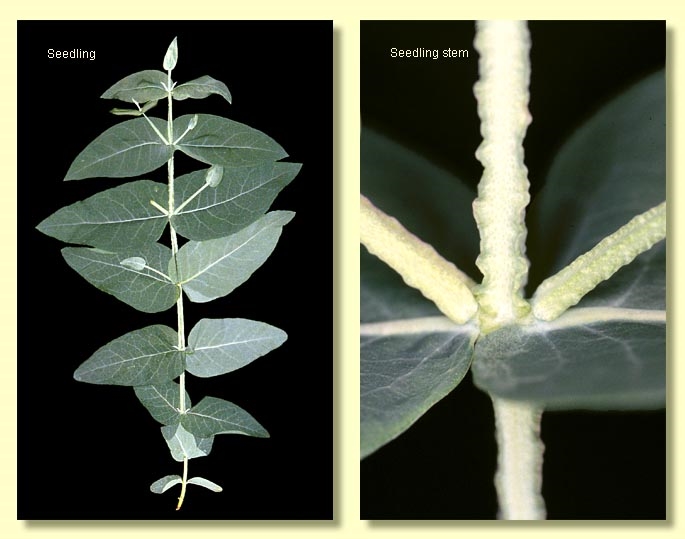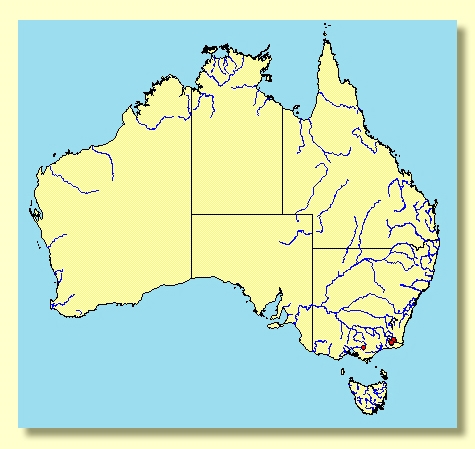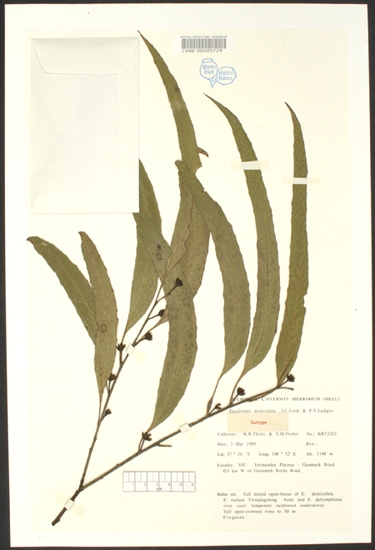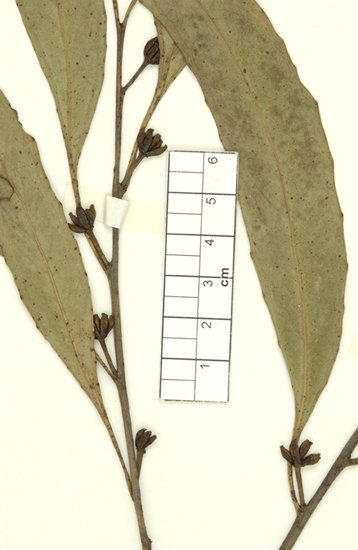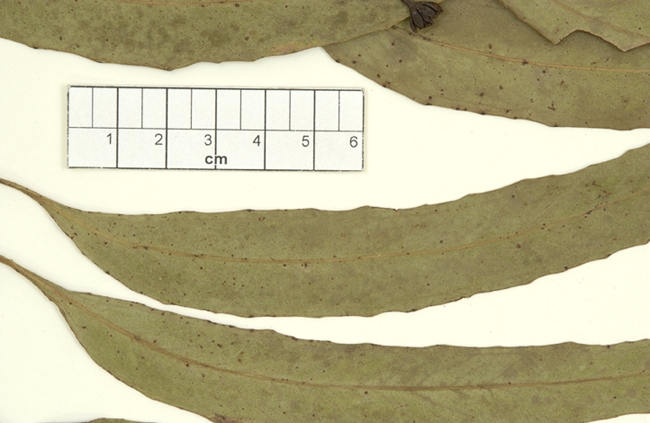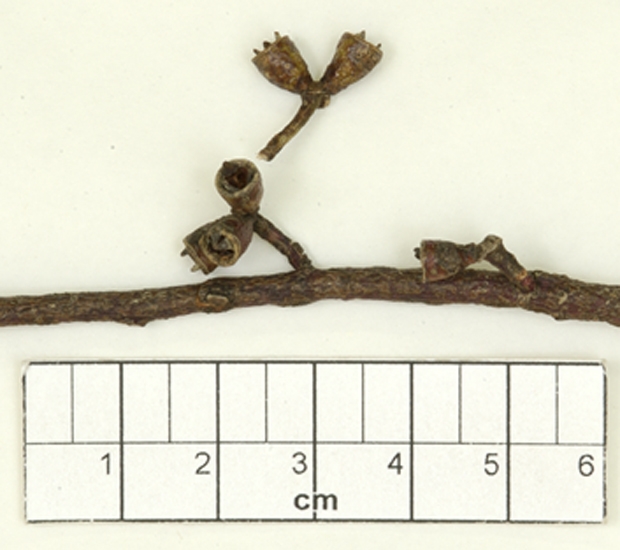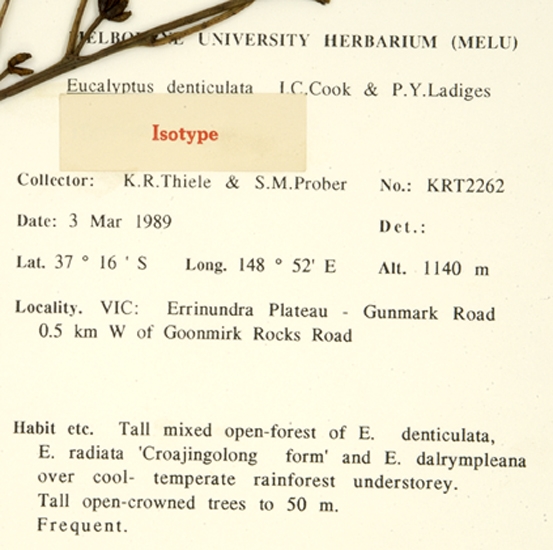Euclid - Online edition
Eucalyptus denticulata
Eucalyptus | Symphyomyrtus | Maidenaria | Euryotae | Globulares | Remanentes
T: Errinundra Plateau, Gunmark road 0.5 km W of Goonmirk Rocks Road, 3 Mar. 1990, K.Thiele & S.Prober KRT2262; holo: MEL 1578338; iso: CANB, MELU, NSW.
Bark smooth except for some loose rough grey, black or brown bark at base of trunk; smooth bark white, cream, yellow, brown, green or grey, horizontal black scars usually present on trunk, often ribbons of decorticated bark hang in the upper branches.
Juvenile growth (coppice or field seedlings to 50 cm): stem square in cross-section and prominently winged, not or only slightly glaucous; juvenile leaves opposite, sessile for many pairs, ovate to lanceolate, 5–12.5 cm long, 1.7–4.5 cm wide, margin entire or crenulate, blue-green or green.
Adult leaves alternate, petiole 1.5–3.1 cm long; blade lanceolate to falcate, 13–25 cm long, 1.4–2.5 cm wide, base tapering to petiole, margin toothed, concolorous or slightly discolorous, glossy, green, side-veins usually acute, sometimes at a wider angle to the midrib, moderately to densely reticulate, intramarginal vein parallel to and remote from the margin, oil glands few, island; new growing tips red-brown, not glaucous.
Inflorescence axillary unbranched, peduncles 0.6–1.5 cm long, buds 7 per umbel, sessile or on pedicels to 0.2 cm long. Mature buds oblong to ovoid to fusiform, ca 0.5 cm long, ca 0.3 cm wide, green or red, smooth, angled longitudinally, scar absent, outer operculum held and splitting at apex with inner operculum showing through it as bud grows, conical to rounded, stamens inflexed or irregularly flexed, anthers cuboid to oblong, versatile, dorsifixed, dehiscing by longitudinal slits (non-confluent), style long, stigma blunt, locules 3 or 4, the placentae each with 4 vertical ovule rows. Flowers white.
Fruit sessile or pedicellate (pedicels 0–0.2 cm long), cup-shaped, barrel-shaped or cylindrical, 0.5–0.7 cm long, 0.4–0.6 cm wide, may be faintly angled longitudinally, disc descending, valves 3 or 4, exserted, or near rim level.
Seeds black, brown, or grey, 1.5–2.5 mm long, ovoid or flattened-ovoid, lacunose, dorsal surface pitted (shallowly), hilum ventral.
Cultivated seedlings (measured at ca node 10): cotyledons bilobed; stems square in cross-section and winged, glaucous; leaves opposite and sessile for many nodes, cordate, 4–10 cm long, 2–4 cm wide, amplexicaul, margin entire, apex pointed, dull, glaucous or blue-green.
Flowering time not known.
A medium-sized to tall tree of wet forests south of Bombala in far south-eastern New South Wales and highlands of eastern Victoria, particularly the Errinundra Plateau. Closely related to E. nitens, it differs in the less conspicuous, narrower juvenile leaves, the shorter period of juvenility, and the denticulate margins of the adult leaves. The buds of E. denticulata do not shed the outer operculum as in E. nitens but have an indefinite "scarring" only at the tip. This anomalous operculum formation can be seen as well in E. sturgissiana.
Eucalyptus denticulata belongs in Eucalyptus subgenus Symphyomyrtus section Maidenaria, a large group of species more or less restricted to south-eastern Australia, characterised by bilobed cotyledons, simple axillary inflorescences, buds with two opercula, stamens with versatile anthers and flattened seeds with a ventral hilum. Within this section, E. denticulata belongs in series Globulares subseries Remanentes, having large, sessile, glaucous or non-glaucous, juvenile leaves opposite for many pairs on square, winged stems, small buds in clusters of seven and small fruit with descending disc.
Trees in the forests to the west of the Baw Baw plateau area, e.g. Mount Toorongo, may have characteristics of E. denticulata buds (scarred at top due to unshed outer operculum) and numerous lenticels on the adult leaf margins, but have the very wide juvenile leaves characteristic of E. nitens.

